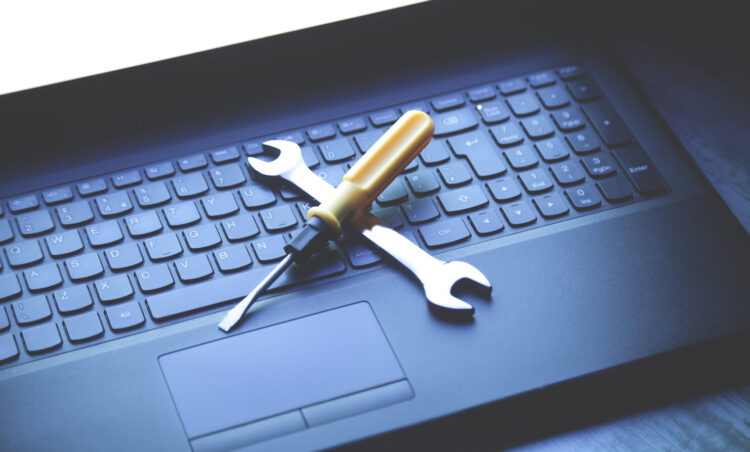Are you struggling to maximize your data center uptime? Don’t worry, you are not alone.
In this article, we will explore best practices for data center maintenance and monitoring to ensure your business stays on the cutting edge of technology and security.
With these tips, you can rest assured knowing that your data is safe and secure!
Benefits of Maximizing Uptime
Maximizing uptime is a key goal for companies wanting to maximize the efficiency and productivity of their data centers.
Uptime is the time period when a network or system is fully operational, and downtime is when it’s not functioning normally. The benefits of maximizing uptime far outweigh the costs associated with planned and unplanned downtime.

Increased Efficiency: Unscheduled downtime can cause systems to shut down and stop workers from completing tasks efficiently. Maximizing uptime ensures systems remain up and running, eliminating lost productivity hours due to malfunctions or other downtime events. One of the ways companies can maximize uptime in their data centers is by investing in reliable backup power systems such as data center UPS (uninterruptible power supply) units, which provide emergency power to the system during power outages, equipment failures, or other disruptions.
Reduced Costs: When systems are up and running, they use fewer resources while performing more tasks at faster speeds – reducing total costs associated with operation. Additionally, the need for spending money on patching errors caused by downtime will be eliminated as maximizing uptime prevents them in the first place.
Improved Reliability: When servers are kept up and running, reliability improves as ongoing maintenance keeps problem areas identified and patched in order to prevent further issues arising in the future. This leads to fewer interruptions caused by outages, resulting in smoother operations for businesses that rely on reliable equipment for their successes.
By implementing best practices for data center maintenance and monitoring, companies can increase network reliability while proactively preventing potential issues before they occur—ultimately leading to reduced costs, increased efficiency and improved reliability.
Key Strategies for Data Center Maintenance

Successful data center maintenance requires strategic planning, consistent implementation, and continuous assessment. To get the most out of your data center, here are some key strategies to consider:
- Make sure the physical infrastructure is up to date. This includes all hardware, network equipment and cables, cooling systems, and storage technology. Regularly review and upgrade components as needed to maintain peak performance, efficiency and reliability.
- Utilize staffing and team structure that is well-versed both in data center operations and facilities management—especially for any IT-centric projects. Establish roles for all personnel so that tasks can be assigned responsibilities more efficiently.
- Monitor systems on an ongoing basis with alarms or alerts to alert you when something isn’t operating properly or levels have exceeded optimum capacity. Most modern network monitoring tools are capable of sending custom notifications when changes occur in system metrics.
- Adopt an enterprise-grade backup solution for total system recovery in case of any unexpected disruption or natural disaster. Assess your existing system safeguards on a regular basis to determine if you’re adequately protecting vital resources.

Source: enterprisestorageforum.com - Test core components regularly with load simulations as well as other health checks such as power testing or battery testing—in order to determine if they are working correctly with no glitches or potential risks before launching into the production environment. This will help ensure smooth operation when crucial tasks are executed during peak hours of usage or high workloads.
Challenges to Uptime Maintenance
Maintaining uptime remains one of the biggest challenges that data centers face, especially when it comes to managing power consumption, operations and resilience.
To ensure maximum uptime, there are many proactive maintenance and monitoring best practices that must be undertaken — some of which include:
- Deploying intelligent power systems for efficient energy use and greater system availability.
- Identifying potential problems with hardware and software installations before they become larger issues.

- Utilizing real-time data to monitor all aspects of the IT infrastructure from server performance to network usage.
- Having proper maintenance plans in place so critical components are regularly checked for potential failure points.
- Having an effective change management process attached to every major update/upgrade in order to minimize disruption to operations.
- Implementing preventive maintenance (when applicable) in order to reduce breakdowns and their associated costs.
- Using intrusion detection systems (IDS) and other security measures such as authentication measures, encryption or firewalls in order to protect against unauthorized access or malicious code.
Best Practices for Data Center Maintenance and Monitoring

Data centers are complex systems that require constant, careful maintenance and monitoring. As such, there are certain best practices for maximizing data center uptime and ensuring the data center runs efficiently and securely.
Regular physical maintenance is key to keep servers and components running at peak performance. Preventative maintenance should include checking security of physical access to the facilities and testing cooling systems/devices.
The IT infrastructure also needs regular updates to keep systems secure and compliant with industry regulations while also ensuring they are running at optimal performance levels.
Standard preventive measures should be taken to ensure components are working as expected, including inspecting power supplies, cabling, data connections, switches, motherboards and racks. Furthermore, all installations must be tested for compatibility, stability and reliability before going live in production environments.
Properly implemented maintenance schedules can save business owners time and money by preventing costly downtime due to system failures or breaches in security due to patching delays or negligence.

Together with proper monitoring procedures such as applying uniform changes across infrastructures helping automate tasks thereby reducing manual labor can prove immensely beneficial to overall system health & performance/response times over long periods of time.
Conclusion
In conclusion, data center uptime can be maximized by following certain best practices and adhering to established industry standards.
Properly trained staff should continually assess the data center environment and monitor it on a regular basis in order to identify any potential concerns. Regular maintenance should be performed in order to ensure the continued functionality of the data center.
It is also important to use quality equipment and supplies, as well as adopt good security practices to protect sensitive information stored in the data center.
By taking these steps, IT managers can help ensure that their organization’s data center remains operational and available as needed.







